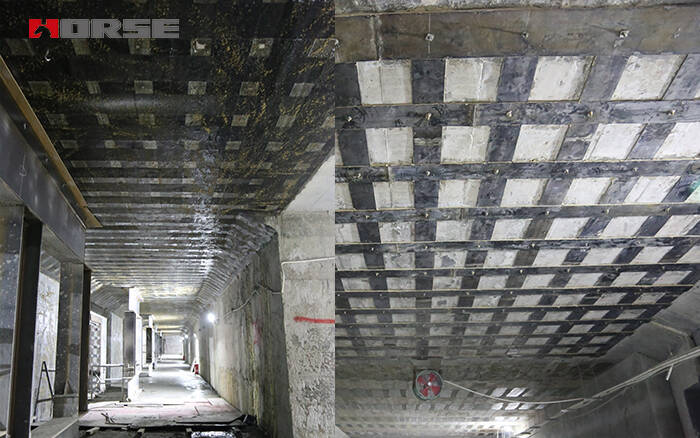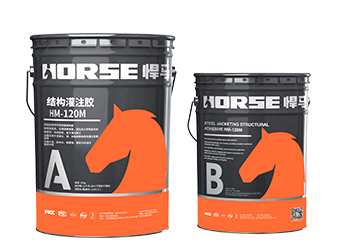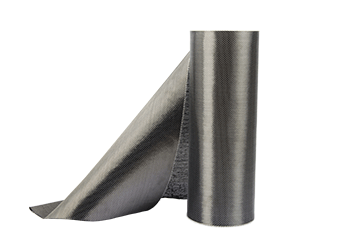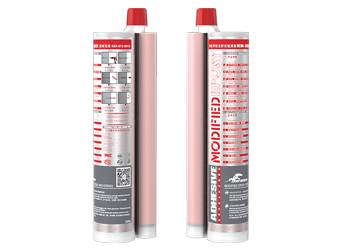Çözümler
Horse Construction, teknik destekler, dokümantasyon destekleri, ürün destekleri, yazılım destekleri, proje destekleri ile tam bir yapısal güçlendirme malzemesi yelpazesi sunar.
concrete structural strengthening

The meaning of structural strengthening
Reinforced concrete structure has a history of more than 100 years since its birth, and it is the most widely used and mature structural system in the engineering field today. This structural system can possess the three basic functions that people demand for buildings, namely safety, applicability and durability. When a building is damaged by an external force, its force or enclosing structural members, there are potential safety hazards or the use of the building needs to be changed, it is necessary to strengthen the whole or part of the building. Reinforcing through corresponding technical means to strengthen the rigidity, strength, stability and durability of the stressed structure or maintenance structure is the three basic functions of the building.
strengthening of reinforced concrete structures:
Reinforce the damaged parts so that they can continue to bear the design bearing capacity of the building;
Reinforce the undamaged parts to meet the safety requirements of the building for new loads.
Several common building structures that need to be reinforced:
(1) Because the building structure is about to be or has exceeded the design service life and structural damage occurs, the use function is limited or the safety hazard is caused.
(2) Mistakes in design or construction caused the building to be unable to withstand the design load.
(3) When buildings are damaged due to catastrophic events such as earthquakes, storms, fires and mudslides.
(4) When protecting some valuable buildings.
(5) When the existing building is renovated or expanded, and the original structure cannot meet the subsequent use loads.
(6) When it is necessary to change the force system of the original design to decorate the building.
It has been 70 years since the founding of the People's Republic of China in 1949. According to the 50-year standard of architectural design, houses built before the 1970s have reached the end of their useful lives, and the buildings in the early stages of reform and opening up have also become aging. It is very necessary to carry out necessary strengthening and transformation for these industrial and civil buildings that are over-aged or reach the design service life soon. At present, the proportion of building structure identification, strengthening and renovation projects in the construction market is also increasing year by year.
Therefore, it is very necessary to conduct in-depth research and popularization and application of reinforced concrete structure strengthening technology. From the perspective of domestic and international civil engineering disciplines and the number of papers published, this has been everyone's consensus. Reinforcing reinforced concrete buildings that have been built can not only save a large amount of new investment, but also reduce the generation of a large amount of non-degradable construction waste, and also reduce the dust pollution caused by the demolition of the original building. Moreover, the cycle of strengthening and reconstruction is much faster than that of demolition and construction, and the resulting social and economic benefits are huge.
Commonly used structural strengthening methods
Increase force area method
External steel method
Prestress method
Change the force route method
Sticking carbon fiber cloth strengthening method
Sticking steel plate method
Anchor plate method
Anchor-bonded steel plate method
Selection of strengthening methods for reinforced concrete structures
We have to analyze the size, location, environment, force characteristics, load conditions, and concrete conditions of the members themselves. In addition, external constraints such as the cost of reconstruction and strengthening and the construction site must also be considered to comprehensively select the strengthening method. Generally, when the load on the beam is not large, the strengthening method of pasting carbon fiber cloth is preferred. When encountering concrete beams with larger loads, the method of riveting and sticking steel plates can be considered. For plate-shaped components, it is necessary to increase the bearing capacity and control the cracks. For compression members such as columns and shear walls, the method of enlarging the cross-sectional area and the strengthening method of outer profile steel can be considered.
Burada ihtiyacınız olan her şeyi bulabilirsiniz. Bu ürünleri denemeye güvenin, sonra büyük bir fark göreceksiniz.

HM-120M Çelik levha kaplama yapıştırıcısı, özellikle yapıştırıcı ile bağlanmış çubuk takviyesini desteklemek için yeni tip modifiye epoksi reçine yapı yapısal perfüzyon yapıştırıcısıdır. Çeşitli alt tabakalar ve metallerle bağlanabilir ve yüksek bağlanma m

Horse Construction'ın karbon fiberi, binalar, köprüler, otoyollar, demiryolları, tüneller, iskeleler ve sivil havaalanlarındaki beton, duvarcılık, çelik ve ahşap alt tabakaların yapısal güçlendirilmesi, onarımı ve yenilenmesi içindir.

HM-500 enjekte edilebilir ankraj epoksisi, kuru ve nemli betonda kullanıma uygun, çubuklar ve takviyeler için 2 bileşenli, epoksi reçine bazlı, tiksotropik, yüksek performanslı bir ankraj malzemesidir.